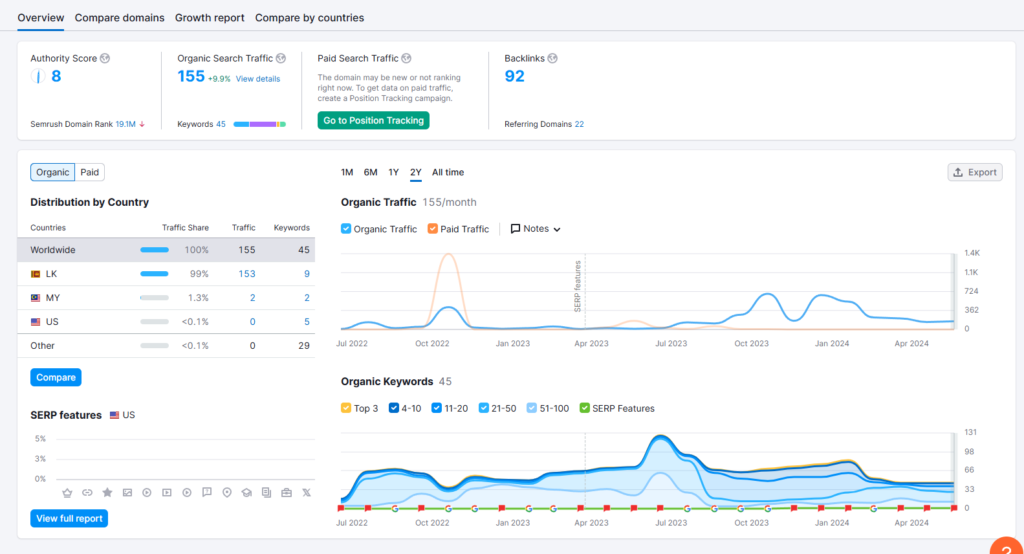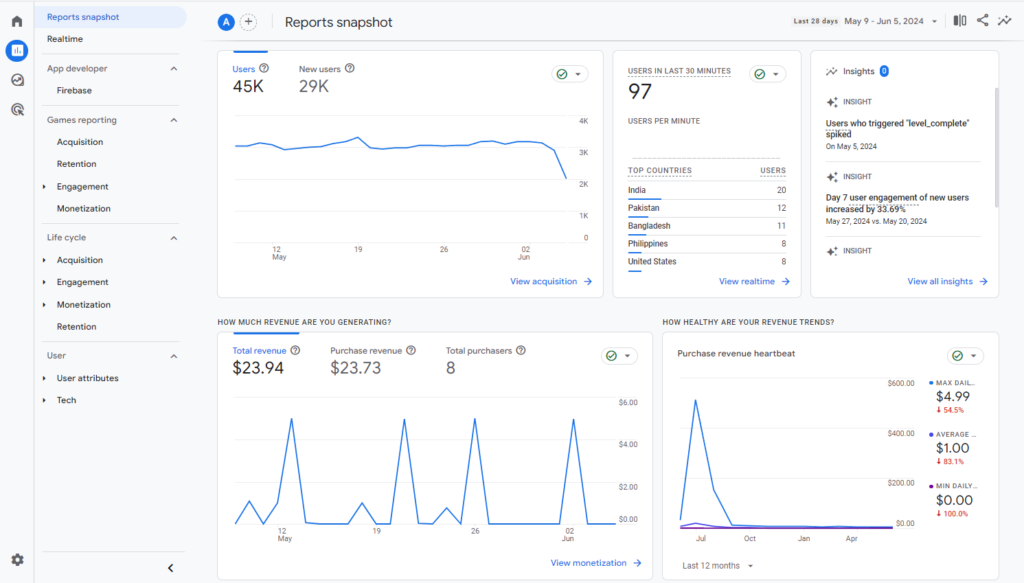- By dushan
- March 14, 2024
- No Comments
SEO Basics for Beginners: A Complete Guide
In today’s digital age, SEO is crucial for a strong online presence. SEO optimizes your website to rank higher on search engines, attracting more visitors. This increased visibility builds credibility and improves user experience. Understanding these basics helps you stay competitive and succeed online.

What is SEO?
Search Engine Optimization (SEO) is the practice of improving your website to increase its visibility when people search for products or services related to your business on search engines like Google, Bing, and Yahoo. SEO involves various techniques and strategies to help your site rank higher in search engine results pages (SERPs).
Search engines work by using algorithms to crawl and index websites. They analyze the content on these sites and rank them based on relevance and quality. When a user types a query into a search engine, it sifts through indexed pages to deliver the most relevant results.
The role of search engine algorithms is crucial in this process. They determine how well your site matches the search query, considering factors like keyword usage, site structure, and backlinks. By understanding and leveraging these algorithms, you can optimize your website to achieve better rankings and drive more traffic.
Why is SEO Important?
SEO is crucial because it increases your website’s visibility and traffic for free. When your site ranks higher in search engine results, more people can find and visit it without the need for paid ads. This organic traffic is valuable, as it brings in visitors who are actively searching for your products or services.
Users tend to trust websites that appear on the first page of search results. A higher ranking signals to users that your site is a reliable and authoritative source, which can lead to increased trust and more business.
Additionally, SEO improves the user experience. It focuses on creating a well-structured, fast, and mobile-friendly website, which keeps visitors engaged and satisfied. A positive user experience can result in higher conversion rates and repeat visits.
The benefits of SEO are long-term. Once your site achieves a high ranking, it can maintain that position with consistent optimization, providing a continuous return on investment.
Key Components of SEO
Keyword Research
Keyword research is vital for effective SEO. It helps you understand what terms and phrases people use when searching for information related to your business. By targeting these keywords, you can attract more relevant traffic to your site.
Several tools can assist with keyword research, including Google Keyword Planner, Ahrefs, and SEMrush. These tools provide insights into search volume, competition, and keyword trends.

Google Keyword Planer.

Ahref Tool

Semrush Tool
Identifying relevant keywords involves finding terms that balance high search volume with low competition. Focus on keywords that match user intent and align with your content. This targeted approach ensures that your SEO efforts are both efficient and effective.
On-Page SEO
On-page SEO focuses on optimizing individual web pages to improve their search engine rankings and attract more organic traffic.
Title tags: Crafting effective title tags is essential for on-page SEO. Titles should accurately describe the content of the page while incorporating relevant keywords to improve visibility.
Meta descriptions: Writing compelling meta descriptions enhances click-through rates from search engine results pages. These brief summaries should entice users to click on your link by highlighting the value of your content.
Headings structure: Structuring content with headings (H1, H2, H3) improves readability and helps search engines understand the hierarchy of information on your page.
URL structure: Creating clean and descriptive URLs is crucial for user experience and SEO. Clear URLs make it easier for users to navigate your site and understand the content of each page.
Internal linking: Internal linking is a valuable on-page SEO strategy that connects different pages within your site. It helps distribute link equity and encourages users to explore more of your content.
Image optimization: Using descriptive file names and alt text for images improves accessibility and provides additional context for search engines. Optimizing images can enhance your overall on-page SEO efforts and improve user experience.
Content Creation
High-quality content is crucial because it provides value to your audience and establishes your authority in your niche. It helps build trust and credibility with your audience and encourages them to return to your site for more information.
User-friendly content is characterized by readability, clarity, and relevance. It should be easy to understand and navigate, with clear headings and concise paragraphs. Valuable content addresses the needs and interests of your target audience, providing solutions to their problems or answering their questions.
Technical SEO
Ensuring site speed and performance is crucial for technical SEO. A fast-loading website improves user satisfaction and reduces bounce rates, positively impacting your search engine rankings.
Mobile-friendliness is another key aspect of technical SEO. With the increasing use of mobile devices, having a responsive design ensures that your website displays correctly and functions well on various screen sizes and devices.
Creating and submitting XML sitemaps helps search engines crawl and index your website more efficiently. XML sitemaps provide a roadmap of your site’s structure, helping search engines understand its content and hierarchy.
Using a robots.txt file allows you to guide search engine crawlers on which pages to crawl and index and which to ignore. This helps prevent the indexing of duplicate or irrelevant content and ensures that search engines focus on the most important pages of your site for ranking purposes.
Off-Page SEO
Building high-quality backlinks is a critical aspect of off-page SEO. Backlinks from reputable and relevant websites signal to search engines that your site is trustworthy and authoritative, leading to higher rankings.
Strategies for earning backlinks include creating valuable and shareable content, reaching out to influencers and industry leaders for collaborations, and participating in relevant online communities and forums.
Social media promotion is another off-page SEO strategy that can increase your content visibility and attract more visitors to your site. Sharing your content on social media platforms helps expand your reach, engage with your audience, and drive traffic back to your website.
Monitoring and Analytics
Tracking SEO efforts is crucial to understand what is working well and what needs improvement. By monitoring key metrics such as website traffic, keyword rankings, and conversion rates, you can identify areas for optimization and make informed decisions to enhance your SEO strategy.
Tools such as Google Analytics and Google Search Console are indispensable for monitoring performance. These tools offer comprehensive data and analytics on various aspects of your website’s performance, including traffic sources, user behavior, and search engine visibility.

Google Analytics.

Google Search Console.
Analyzing traffic, rankings, and user behavior allows you to gain insights into how users interact with your website. By understanding user preferences and behaviors, you can tailor your content and optimization strategies to better meet their needs and improve overall user experience.

